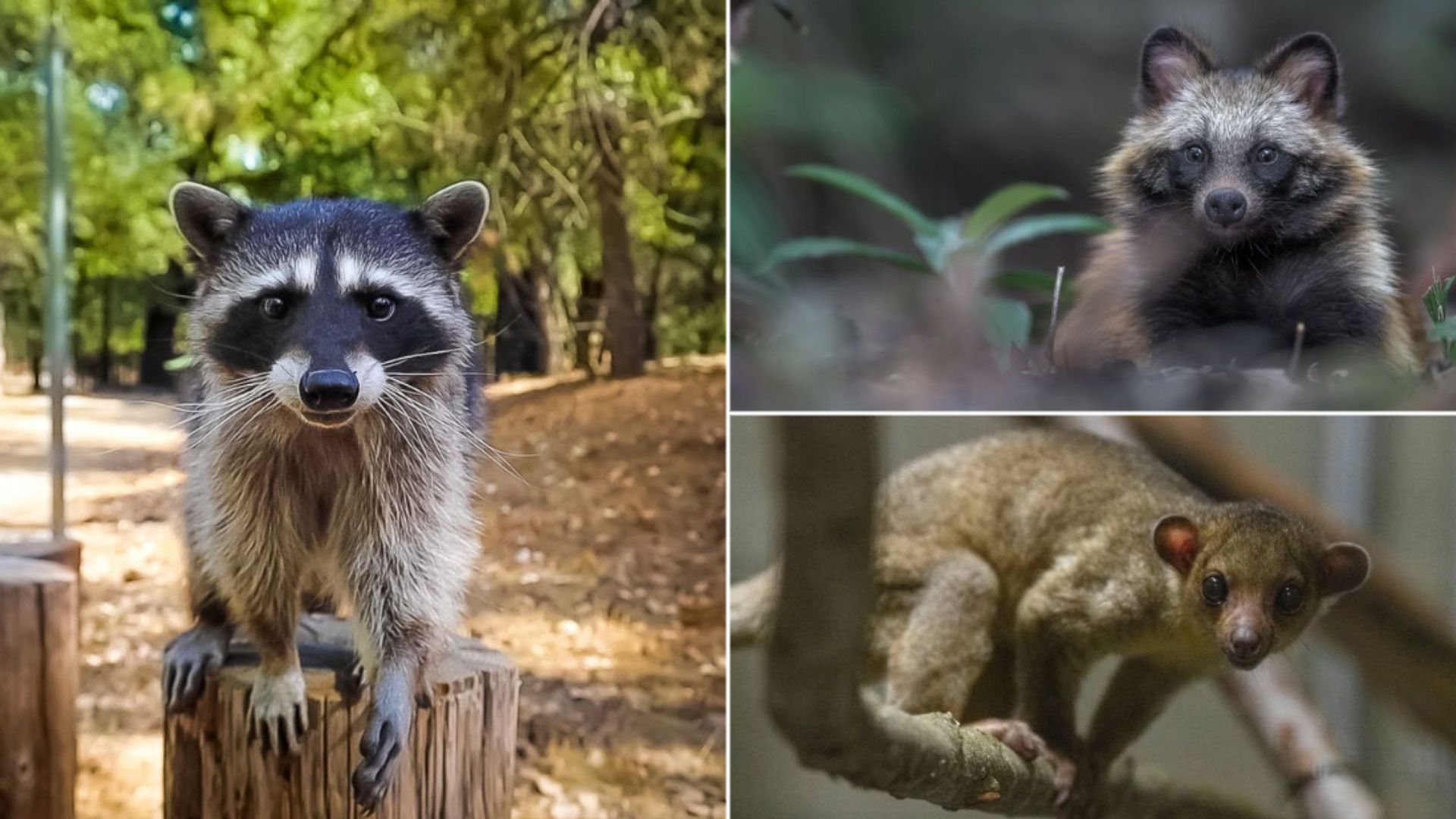Raccoons are fascinating creatures known for their distinctive facial markings and bushy tails. Interestingly, there are several animals across the globe that share striking physical traits with these nocturnal mammals.
From their masked appearances to their inquisitive behaviors, these animals not only resemble raccoons but also share several intriguing characteristics.
This list explores such animals, detailing their unique features, habitats, and the shared traits that make them raccoon look-alikes.
1. Coati

In the lush tropical forests of Central and South America, the coati makes its home. These creatures are often mistaken for raccoons due to their similar facial masks and ringed tails. The coati, however, boasts a longer snout, which it uses skillfully to forage for food on the forest floor.
These animals are highly social, often seen in large groups, playfully interacting with one another. Their diet consists mainly of fruits, insects, and small vertebrates, which they hunt with a characteristic snuffling sound. Coatis are diurnal, a trait that sets them apart from their nocturnal raccoon cousins.
The arboreal lifestyle of coatis sees them climbing trees with ease, using their long tails for balance. Interestingly, coatis are known for their intelligence and problem-solving skills, which they use to navigate complex forest environments.
This adaptability is one of the many traits they share with raccoons. For those visiting Central America, spotting a coati in the wild is a delightful experience.
2. Ringtail

The ringtail is a nocturnal creature found in the arid regions of North America. Its striking resemblance to raccoons is most evident in its black and white banded tail and expressive eyes. Unlike raccoons, ringtails are solitary animals, preferring the quiet solitude of the night to explore their rugged habitats.
These animals are agile climbers, adept at navigating rocky terrains and canyon walls, often using their tails for balance. Their diet is diverse, including fruits, insects, and small mammals, which they hunt with unmatched stealth and precision.
Ringtails are known for their adaptability to harsh environments, a trait they share with raccoons. Despite their solitary nature, they can be quite playful and curious. For those traversing the deserts of the American Southwest, encountering a ringtail is a rare and exciting event, offering a glimpse into the life of these elusive creatures.
3. Kinkajou
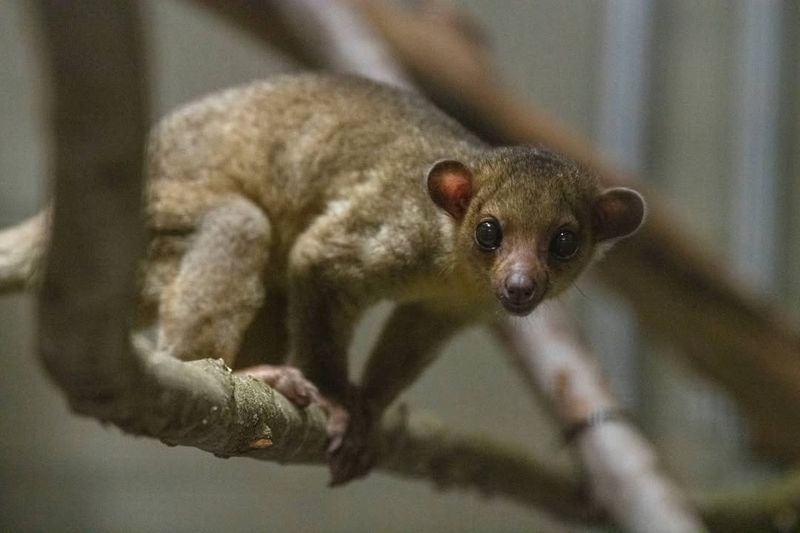
Hidden within the dense canopies of Central and South American rainforests, the kinkajou thrives. These nocturnal mammals are often likened to raccoons due to their round eyes and nimble nature. Unlike raccoons, kinkajous have a prehensile tail, which acts as a fifth limb, aiding them in their arboreal lifestyle.
Kinkajous are primarily frugivores, feasting on fruits and nectar, contributing to the pollination of many plant species. Their long tongues help them reach nectar within flowers, showcasing their unique adaptation to their environment. These creatures are social, often found in small family groups, communicating through a series of chirps and whistles.
Their playful demeanor and agility make them a joy to observe, as they swing effortlessly from branch to branch. The kinkajou’s ability to adapt to both the forest floor and canopy illustrates their versatility, a characteristic shared with raccoons.
4. Red Panda
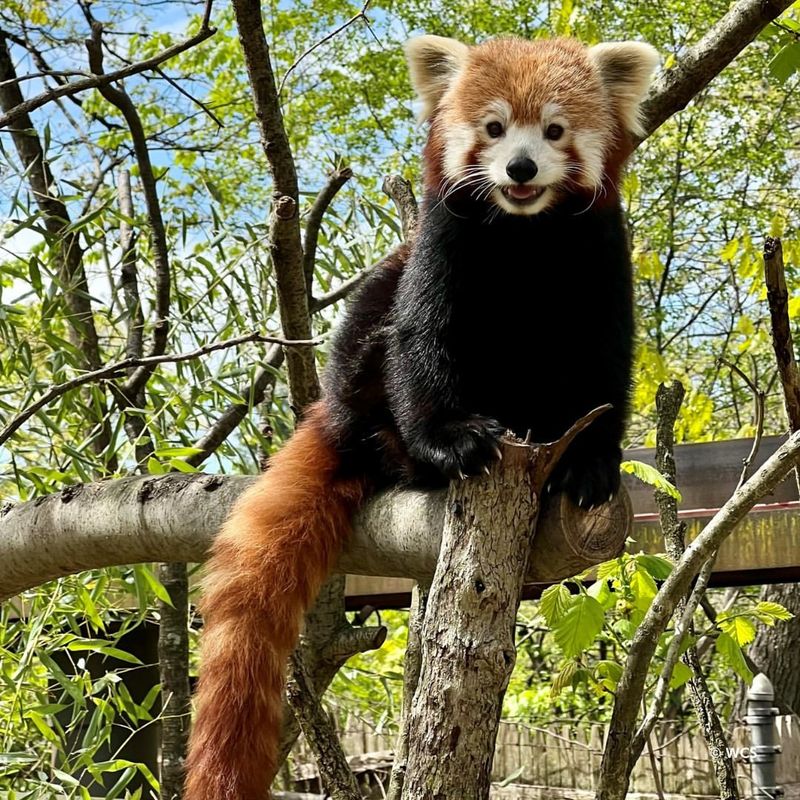
In the misty Himalayan forests, the red panda makes its charming appearance. Often compared to raccoons due to their masked faces and bushy tails, red pandas boast a unique reddish-brown fur that sets them apart. These solitary animals are primarily bamboo eaters, using their strong, curved claws to climb and forage in the trees.
Unlike raccoons, red pandas are mostly active during dawn and dusk, displaying a crepuscular lifestyle. Their natural habitats are often steep and rugged, requiring excellent climbing skills, which they possess in abundance. The red panda’s diet consists largely of bamboo, though they occasionally consume fruits and small insects. Their playful antics and endearing appearance make them a favorite among animal lovers.
Despite their similarities to raccoons, red pandas are an entirely distinct species with unique adaptations to cold mountain environments. For those trekking through the Himalayas, encountering a red panda is a rare and treasured sight.
5. Binturong
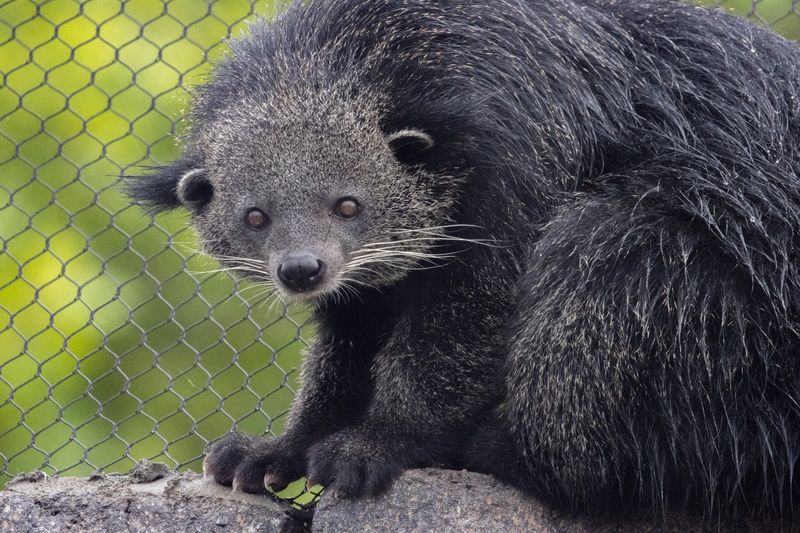
The binturong, often referred to as the bearcat, roams the tropical rainforests of Southeast Asia. Its resemblance to raccoons is evident in its bushy tail and curious eyes, though binturongs are larger in size. These creatures have a unique musky odor reminiscent of popcorn, a trait that aids in communication among their kind.
Binturongs are primarily frugivores, but they also consume small animals and insects, making them omnivorous. Their prehensile tail allows them to navigate the forest canopy with ease, using it for balance and grasping branches. Unlike raccoons, binturongs are slow movers, often seen lounging lazily in the trees during the day.
Their social behaviors include grooming and playing, which they engage in within small family groups. The binturong’s adaptability to both arboreal and terrestrial environments is a shared trait with raccoons.
6. Cacomistle
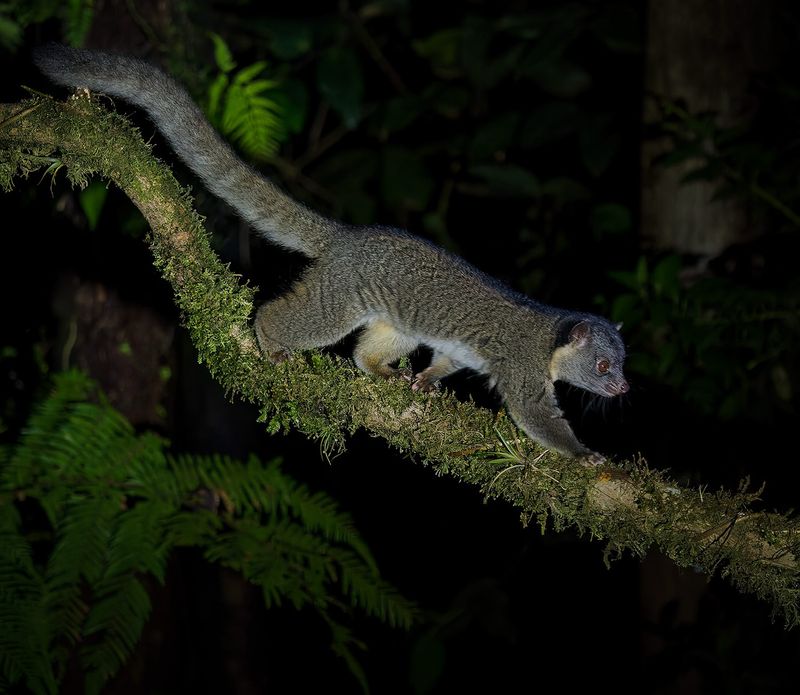
The cacomistle, native to the forests of Central America, is a nocturnal creature with a striking resemblance to raccoons. Its banded tail and masked face are characteristic features that make it easily recognizable. Unlike raccoons, cacomistles are solitary and elusive, often spending their nights hunting small prey and foraging for fruits.
These agile climbers are adept at navigating the forest canopy, using their tails for balance as they leap between branches. Cacomistles are omnivorous, with a diet that includes fruits, insects, and small vertebrates. Their nocturnal lifestyle allows them to avoid many predators, making them efficient hunters in the dark. Despite their solitary nature, cacomistles communicate through a series of chirps and whistles, especially during mating season.
Their adaptability to various environments is a trait they share with raccoons, allowing them to thrive in diverse habitats. For those exploring Central American forests, spotting a cacomistle is a rare and fascinating encounter.
7. Palm Civet
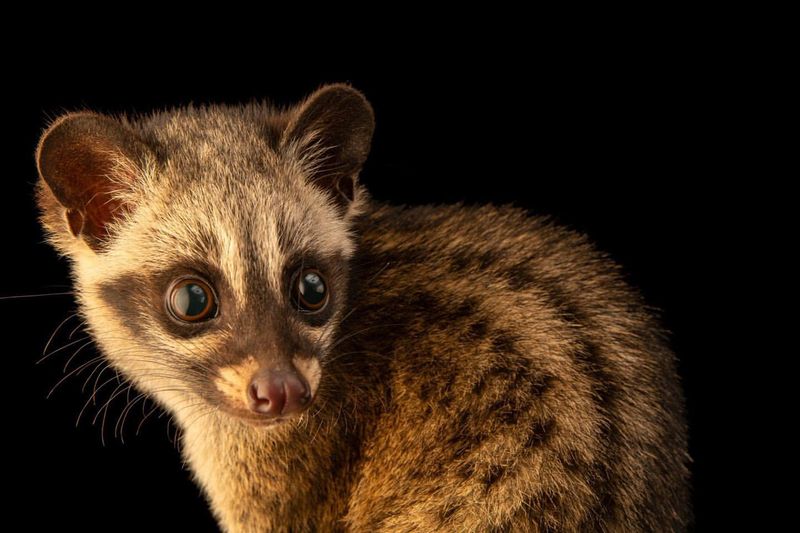
In the coffee plantations of Southeast Asia, the palm civet often prowls. Known for their role in producing the unique civet coffee, these animals share a visual likeness to raccoons with their masked faces. Palm civets are nocturnal, spending their nights exploring and feeding on fruits, insects, and small vertebrates.
Their agile climbing skills allow them to navigate the forest canopy and plantation trees with ease, often using their long tails for balance. Unlike raccoons, palm civets have a more solitary lifestyle, although they are known to be quite territorial. They communicate through a series of growls and grunts, especially when threatened.
The adaptability of palm civets to both urban and rural environments is a trait they share with raccoons. Their presence in coffee plantations highlights their role in the ecosystem, despite being considered pests by some farmers. For travelers in Southeast Asia, encountering a palm civet offers a glimpse into their nocturnal world.
8. Raccoon Dog
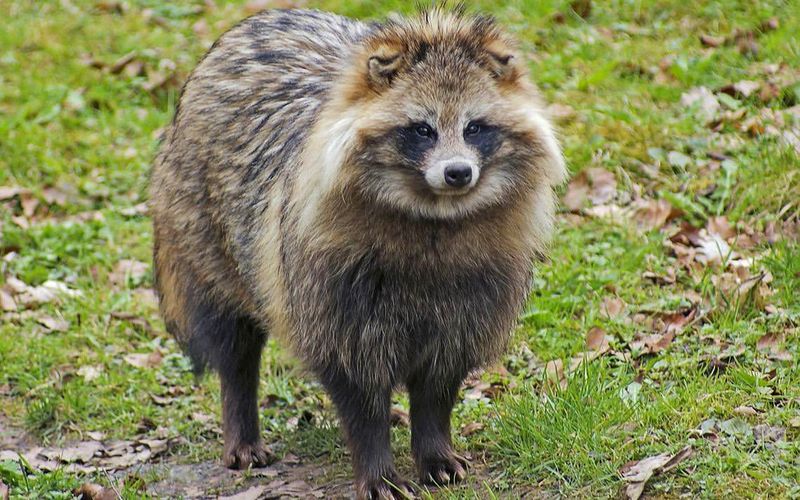
Amidst the forests of East Asia, particularly Japan, the raccoon dog roams. Despite its name, this animal is more closely related to foxes than raccoons, though its appearance might suggest otherwise. With its masked face and fluffy tail, the raccoon dog shares several physical traits with raccoons. These animals are known for their adaptability, thriving in both rural and urban environments.
They are omnivorous, with a diet that includes fruits, insects, and small mammals, similar to raccoons. Raccoon dogs are crepuscular, most active during dawn and dusk, and they often travel in pairs during the breeding season.
Their social behaviors and adaptability are traits they share with raccoons, though raccoon dogs are less adept climbers. For nature enthusiasts visiting Japan, spotting a raccoon dog can be a delightful experience, as these creatures are known for their curious and playful nature. Their presence in folklore adds to their mystique, making them a beloved animal in Japanese culture.
9. Paca
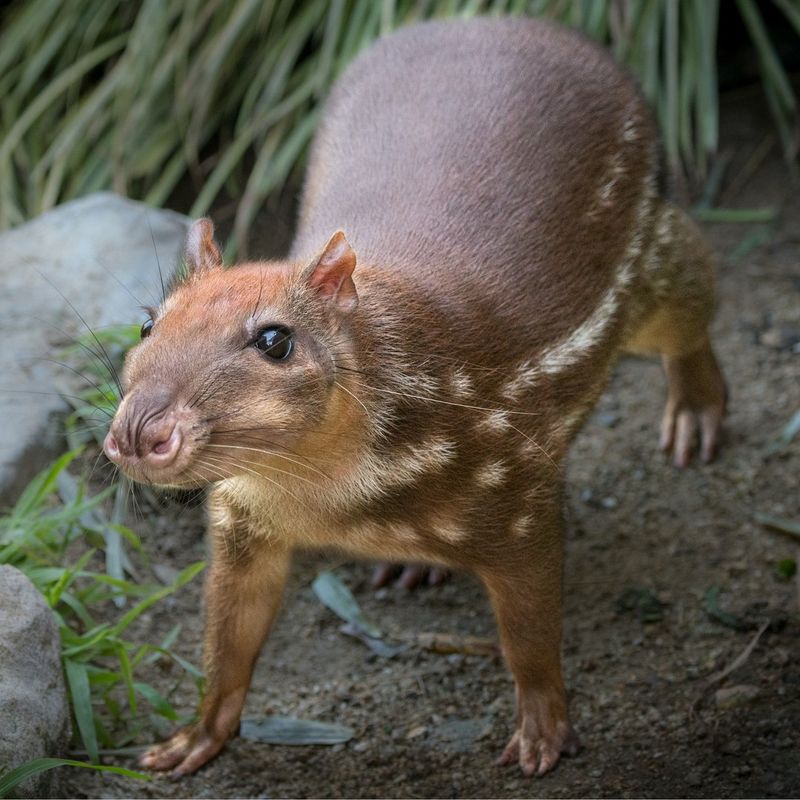
In the dense rainforests of South America, the paca quietly forages. While not as visually similar to raccoons as some other animals, pacas share the same curious nature and nocturnal habits. They are known for their distinctive spotted coats and strong, sturdy bodies, which they use to navigate the forest floor. Pacas are primarily herbivores, feeding on fruits, seeds, and roots, which they find using their keen sense of smell.
Unlike raccoons, pacas are not climbers; they prefer to stay close to the ground, where they create burrows for shelter. These animals are solitary, often foraging alone or with a mate during the breeding season. Their ability to adapt to different environments, including tropical forests and agricultural areas, is a trait shared with raccoons.
For those exploring the rainforests, encountering a paca provides insight into the diverse wildlife of the region. Their elusive nature and unique adaptations make them a fascinating subject of study for wildlife enthusiasts.
10. Olingo
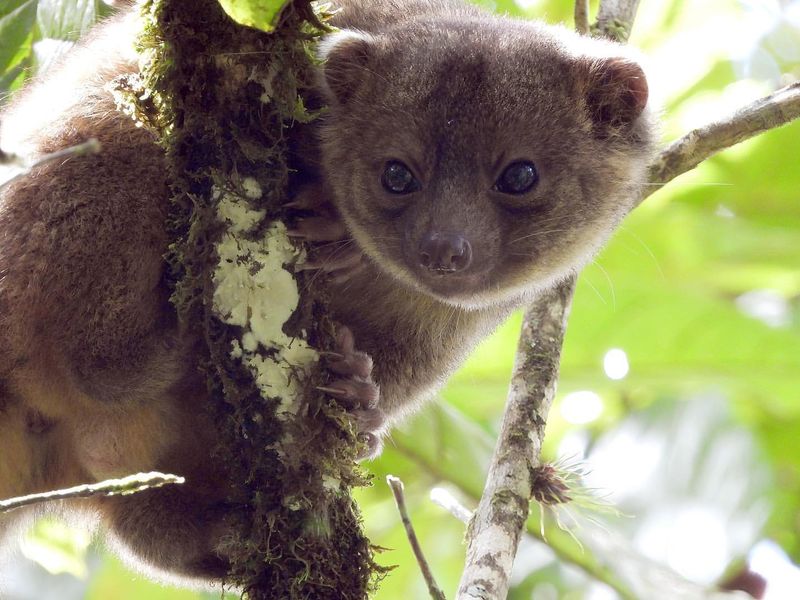
High in the tropical forest canopies of Central and South America, the olingo thrives. These small, arboreal mammals bear a striking resemblance to kinkajous and, by extension, raccoons, thanks to their large eyes and ringed tails.
Olingos are nocturnal creatures, spending their nights in search of fruits and nectar. Their diet primarily consists of fruit, which they deftly pick from branches, displaying their agility and balance. Unlike raccoons, olingos are strictly arboreal, rarely descending to the forest floor.
Their social structure includes small family groups, often seen grooming and playing among the treetops. Olingos share the raccoon’s inquisitive nature and adaptability to various environments. For those venturing into the rainforests, observing an olingo can offer a glimpse into the complex ecosystems of these rich habitats.
Their playful behavior and striking appearance make them a favorite among wildlife watchers and researchers alike.
11. Raccoon Butterflyfish

In the tropical coral reefs of the Indo-Pacific, the raccoon butterflyfish swims gracefully. Its name comes from the distinct mask-like markings around its eyes, reminiscent of a raccoon’s appearance. These vibrant fish are a sight to behold, with their bright yellow bodies and intricate patterns.
Raccoon butterflyfish are often found in pairs or small groups, navigating the coral reefs with ease. Their diet consists mainly of coral polyps and small invertebrates, which they pick delicately from the reef surface. Unlike raccoons, these fish are diurnal, active during the day as they explore their colorful underwater world.
The adaptability of the raccoon butterflyfish to various reef environments is a shared trait with raccoons, allowing them to thrive in diverse conditions. Their striking appearance and graceful movements make them a highlight of any underwater adventure.
12. Raccoon Emperor Moth
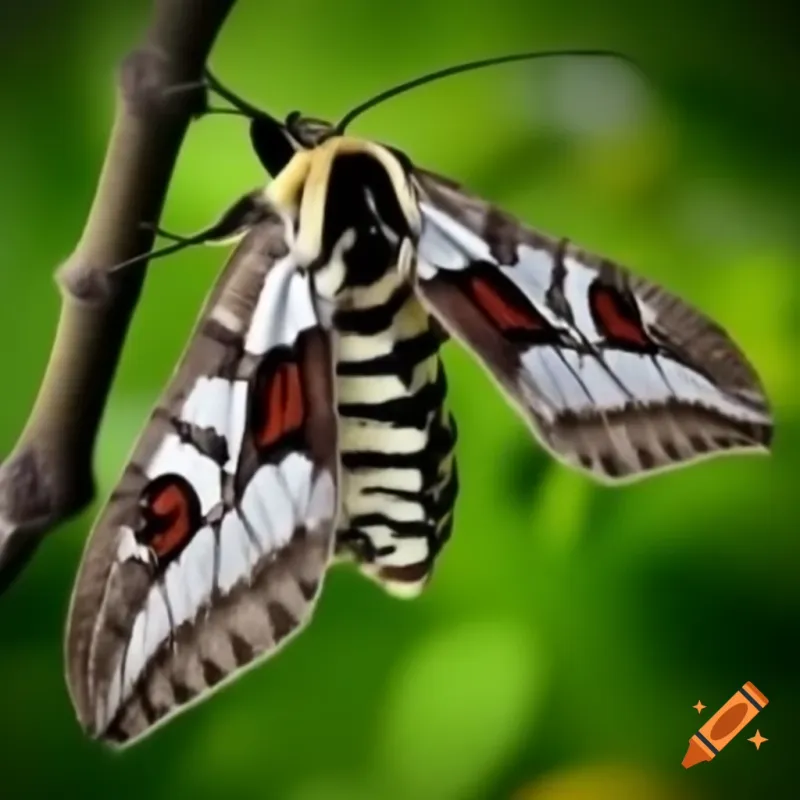
The raccoon emperor moth, with its striking eye-like markings, resembles the facial mask of a raccoon. Found in various parts of Africa, this moth is known for its large, colorful wings and distinctive patterns. Its nocturnal nature means it is most active during the night, when it seeks out mates and food sources.
Unlike raccoons, the raccoon emperor moth does not forage for food. Instead, it relies on stored energy from its larval stage, focusing its short adult life on reproduction. This moth is often attracted to light sources at night, a trait that facilitates its observation by entomologists and enthusiasts.
The adaptability of the raccoon emperor moth to different environments reflects a shared trait with raccoons. For those interested in lepidopterology, observing this moth provides insight into the diversity of nocturnal insects. Its beautiful wing patterns and unique life cycle make it a fascinating subject of study and admiration.
13. Common Genet
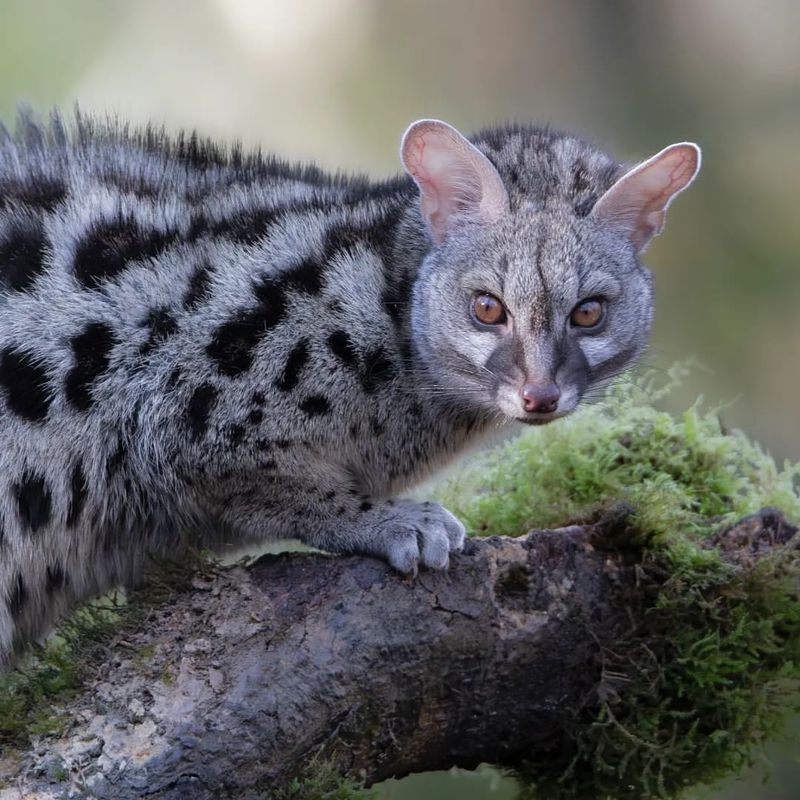
In the savannahs and forests of Africa, the common genet prowls with stealth and grace. Its slender body and ringed tail bear a resemblance to raccoons, though genets are more closely related to civets. These nocturnal creatures are solitary hunters, skilled at navigating both trees and underbrush in search of prey.
Common genets are carnivorous, with a diet that includes small mammals, birds, and insects. Their keen senses and agile movements make them effective predators, often hunting under the cover of darkness.
The adaptability of common genets to various environments is a shared trait with raccoons, allowing them to thrive in diverse habitats. Their elusive nature and striking appearance make them a captivating subject for wildlife enthusiasts.
14. Masked Palm Civet
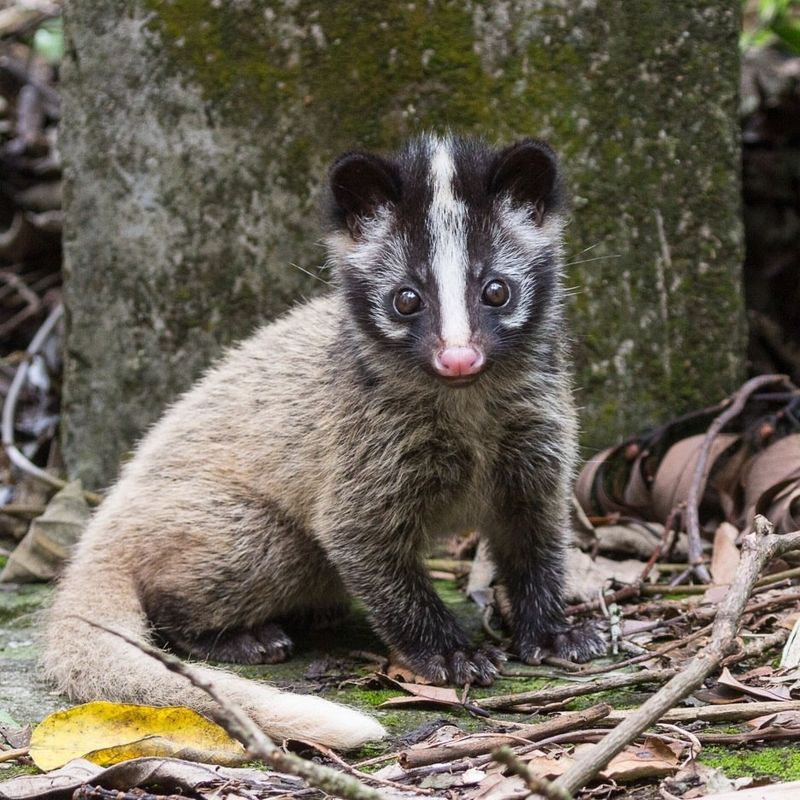
The masked palm civet is a creature of the night, found in the forests of Asia. Its name comes from the distinctive facial mask, reminiscent of a raccoon’s markings. These mammals are known for their solitary nature and nocturnal habits, spending their nights foraging for fruits, insects, and small vertebrates.
Masked palm civets are agile climbers, often seen navigating the forest canopy with ease. Their long tails provide balance as they move through the trees, searching for food. Unlike raccoons, these civets are more reclusive, preferring the cover of darkness to avoid predators and human interaction.
Their adaptability to various environments, including urban areas, is a trait they share with raccoons. For those wandering through Asian forests, encountering a masked palm civet offers a rare opportunity to observe these elusive animals in their natural habitat.
Their mysterious presence and unique adaptations make them a subject of intrigue and study.

